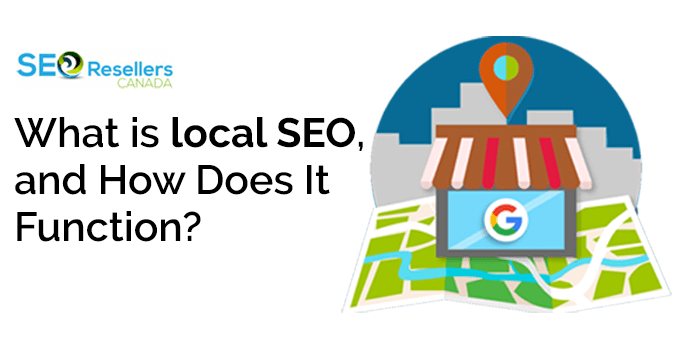Today’s highly competitive and hyper-connected business environment has made it critical for businesses to ensure that their core message and offerings can reach their target audience.
That is where the immense power and potential of search engine optimization (SEO) comes into play.
When used in combination with technical and marketing strategies, SEO helps businesses achieve high rankings on SERPs, ensuring that their website ranks on the first page of Google search.
Google’s front page receives 95% of all web traffic, and the rest only manage 5% or even less. Hence, businesses must rank high or else lose out to their competition.
The best way to achieve success online for businesses is to combine a methodical and comprehensive marketing strategy backed by top-notch search engine optimization.
A drop in the website rankings and visibility is caused by uncontrollable factors, and explaining them to businesses can be difficult.
That is the main reason why the implementation of a quality SEO strategy is placed on the back burner by businesses since they fail to see its potential.
In 2018, search engine optimization had become a priority for every business and must be taken seriously.
However, to do that, you must convince senior executives in the organization to prioritize it and allocate a higher budget on search engine optimization.
1- What is Search Engine Optimization?

Explaining SEO to someone without any background knowledge about the semantics of search engine optimization can be challenging.
It is made harder because SEO is a complex system of digital practices, strategies, and techniques that can be designed to enhance the quality and quantity of online traffic that your website is getting through organic search engine results.
The impact of quality SEO is felt directly by business owners since it allows them to generate quality traffic for their target audience whenever customers’ search for their products or services.
Search engine optimization is a necessity since it is required for building online visibility and exposure for your brand while strengthening the position of the organization in the market.
A business website that doesn’t rank on the first page of Google search will not be visible and will struggle to attract any meaningful traffic that delivers results.
2- Understanding SEO

Google changes or updates parts of its algorithm every year. When you add the 10 major updates with the launch of Hummingbird, which completely changed the dynamics of Google search, it becomes an extremely volatile framework.
This means that your online strategies and tactics must also change, and SEO models that worked a few years ago become irrelevant as time progresses.
Therefore, businesses must constantly monitor all algorithm updates and changes.
Studies have found that 75% of search users don’t bother browsing past the first page, and major search engines influence more than 88% of business purchase decisions.
Search engine optimization today is all about understanding the fluctuations in algorithms and adapting your campaign accordingly.
Being proactive when it comes to SEO is important because it will allow you to stay on top of search rankings, escape penalties, and, most importantly, stay ahead of your competition.
Search engine optimization isn’t only about building your search engine ranking since it involves the content you are sharing with your audience. It involves the following:
- Content promotion and production
- Social media optimization
- Ongoing website audits
- Improving indexability and crawlability
- Consumer research and target persona development
- Ensuring your website fits within the search engines established best practices
Most businesses assume that SEO is all about search engine rankings. Still, it’s more than that since it is all about building better websites, sharing intelligent content, and improving the lives of consumers.
3- SEO Statistics That Prove the Value of Organic Search

Every business currently practicing SEO recognizes that an effective SEO strategy is indispensable for improving their online visibility.
The internet is an endless resource that gets millions of search queries every second from people all over the world.
Those people are all consumers that can be converted into customers for the business.
More people are shopping online than ever before.
So, how do you make sure that people searching online for products and services land on your website? The answer lies in effective SEO practices that will ensure that your website ranks on the first page of search queries related to your products, services, or industry.
Google’s search algorithms are being updated constantly, which means that any SEO strategy a business creates must be flexible and open to change.
To help educate businesses on SEO, we have compiled a few SEO statistics related to the value of organic search.
- The top 5 search results on google get 70% of the clicks
Source: Amazee Metrics
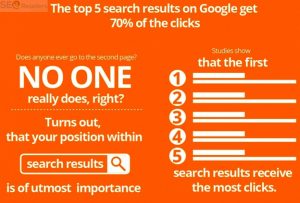
- 88% percent of smartphone users are using their device to search on Google
Source: Think With Google
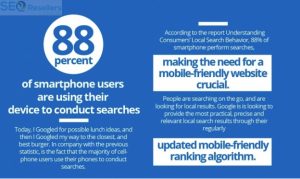
- 61% of marketers say improving SEO and growing their organic presence is their top inbound marketing
Source: HubSpot
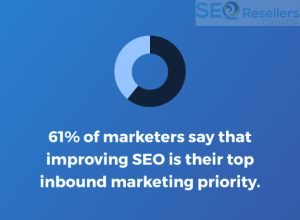
- In 2018, the average firm was expected to allocate 41% of their marketing budget to online, and this media spend is expected to grow to 45% by 2020.
Source: Web Strategies

4- SEO is the Future and Businesses Must Realize It’s Value

It has been forecasted by Borrell Associates that SEO-related spending by businesses will exceed $80 billion by 2020, and it could exceed even more.
It is being estimated that businesses will spend an estimated $613 billion in digital marketing services, which is several times more than ‘ad spending.’ The report focuses on spending by small businesses, and digital marketing services will include:
- Online ads
- Web presence management
- Listings management
- Content creation
- Reputation monitoring
- App development
- Email marketing
- And more
The list above broadly features all the SEO-related digital marketing services that businesses will spend on in the future.
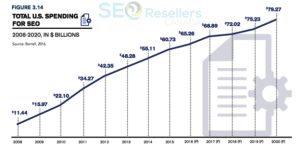
The report churns out some massive numbers, which clearly shows that businesses have realized the value and importance of organic SEO and aren’t shy to spend big on SEO related services.
5- Does SEO Work for Small Businesses?
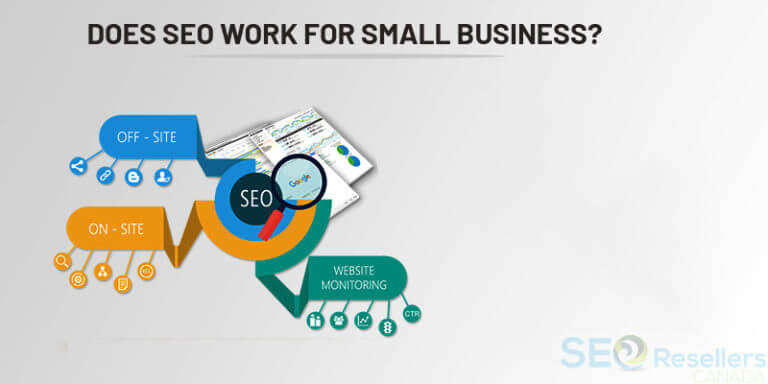
Although it can be intimidating to compete with the many corporations that already have a developed web presence, it is entirely possible to attract new customers online.
With the help of search engine optimization or SEO, you can improve your chances of appearing in the search engine results when potential clients look for products and services exactly like yours.
5.1- Using SEO to Compete with Big Businesses
Being found online isn’t as straightforward as you might think. In fact, even established companies struggle to gain the top position on the search engine results page, despite having more resources than the average small business.
This is because search engine rankings cannot be bought.
There is no way to pay to rank for keywords organically, and this is a good thing for small business websites.
With SEO, you have the same chance at ranking well as companies with budgets ten times the size of yours.
6- SEO Essentials for Small Businesses
Both on-page and off-page elements factor into your search engine rankings, and should both be considered when creating an SEO strategy.
6.1- On-Page SEO
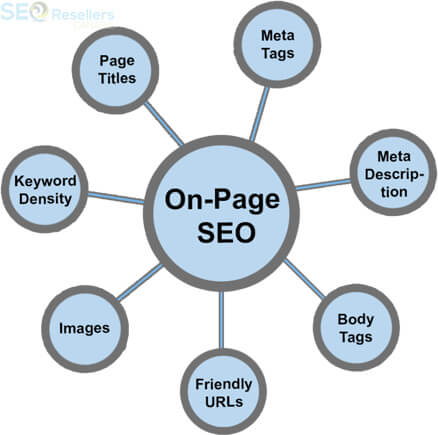
On-page SEO refers to the elements directly on your site, like title tags, meta descriptions, and body content.
These components are easier to work with because you have direct control over them.
If you haven’t already, take some time to optimize these elements and include keywords where relevant.
This is one of the best ways to improve your chances of ranking for specific words and phrases in search engines.
6.2- Off-Page SEO

Off-page SEO refers to all of the elements outside of your site that influence its ability to rank well in search engines.
The most important off-page elements are links, which essentially operate like “votes” from other sites.
This is a bit more complicated than on-page SEO, but the easiest way to understand it is that the more links your site has from high-quality websites, the better your chances are of ranking well.
Link-building takes time, but the best way to do it is by creating quality content on your site. If you post information that other people find useful or entertaining, there’s a chance they’ll want to share it with other people.
7- Advantages of SEO for Small Businesses
SEO is one of the best ways for small businesses to generate brand awareness and site traffic. But beyond that, good SEO can help you build a community and establish a strong digital presence.
Here are just a few of the ways SEO can help your business grow:
7.1- Gain a Competitive Edge
More than three billion people use the Internet for everything from finding information to shopping for goods and services.
As a small business owner, cutting through the noise might seem like an impossible task.
Using SEO to maneuver your brand’s position in search engine rankings is a cost-effective way to increase exposure and gain a competitive edge in your industry.
7.2- Reach Your Target Audience Efficiently
Instead of going to customers, SEO allows customers to quickly come to you. Both on and off-page SEO strategies are designed to target specific segments of your audience and inspire them to act.
Proper management of SEO helps your small business make meaningful connections with customers.
7.3- Provide Relevant Information
Have you ever searched for information online without finding an answer on the first, second, or third result page? It’s a frustrating experience—and the culprit is not a lack of information, but an abundance of poorly executed SEO techniques.
Your website’s SEO and position in search engine rankings are the keys to answering a common question, solving a problem, or meeting a need.
7.4- Expand Your Brand’s Presence

If you’ve ever read about a brand while scanning the news, a guest post, or your Twitter feed, you’ve already experienced what can happen when a brand invests in off-page SEO. Off-page SEO techniques have the potential to take your brand’s presence far on the web.
7.5- Educate Prospective Clients
Producing compelling content is very much a part of SEO. In addition to helping you rank higher for a variety of topics, content is an educational tool that helps establish your brand as an authority.
Develop content in different formats, like presentations, videos, and infographics, to both educate and entertain your audience.
7.6- Build Lasting Relationships
From developing an on-site community of brand advocates to staying in touch on social media, SEO helps build lasting relationships with your customer base.
SEO makes it easy for customers to find your business online, make an instant connection, and stay engaged with your brand.
7.7- Maximize Your Mobile Reach

The future of digital is mobile. After Google’s announcement that a website’s mobile-friendliness will become a ranking factor, it’s clear that optimizing websites for mobile devices is an absolute necessity.
Because mobile users are generally searching for specific information, your small business can employ SEO to increase the rankings of specialized content.
The resulting flow of interested leads has a measurable impact on your business outcomes.
7.8- Gain Access to Valuable Data
Imagine launching a direct mail campaign that brought back granular results about the recipient’s interaction with the material.
Did they immediately throw it away, examine it for a moment, or save the number to their phone? Unfortunately, a direct mail campaign doesn’t produce data at this level.
SEO does. Segmenting your audience and tailoring SEO practices to each persona allows you to accrue data that offers insight into your customers’ behavior.
8- Conclusion
It has become crucial for businesses to develop a solid SEO strategy to ensure that they stay abreast of the changing digital marketing landscape.
The most important thing to realize is that SEO takes time to work and deliver results, so businesses must be patient with their strategy.
Businesses must look to target organic and direct traffic to catch customers who are looking for their products and services.
Editor’s Note: This post was originally published on October 12, 2018, and has been completely revamped and updated for accuracy and comprehensiveness.





















